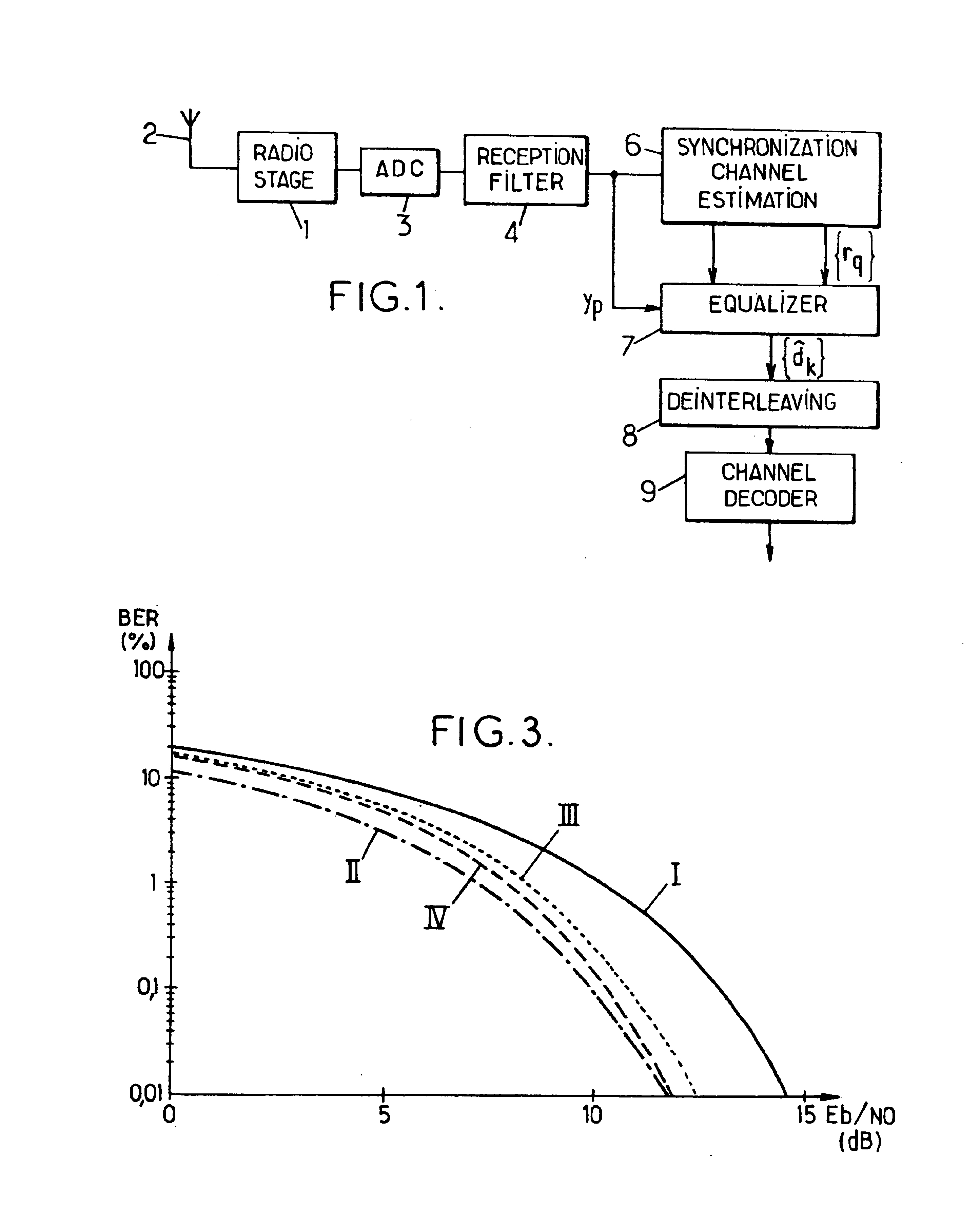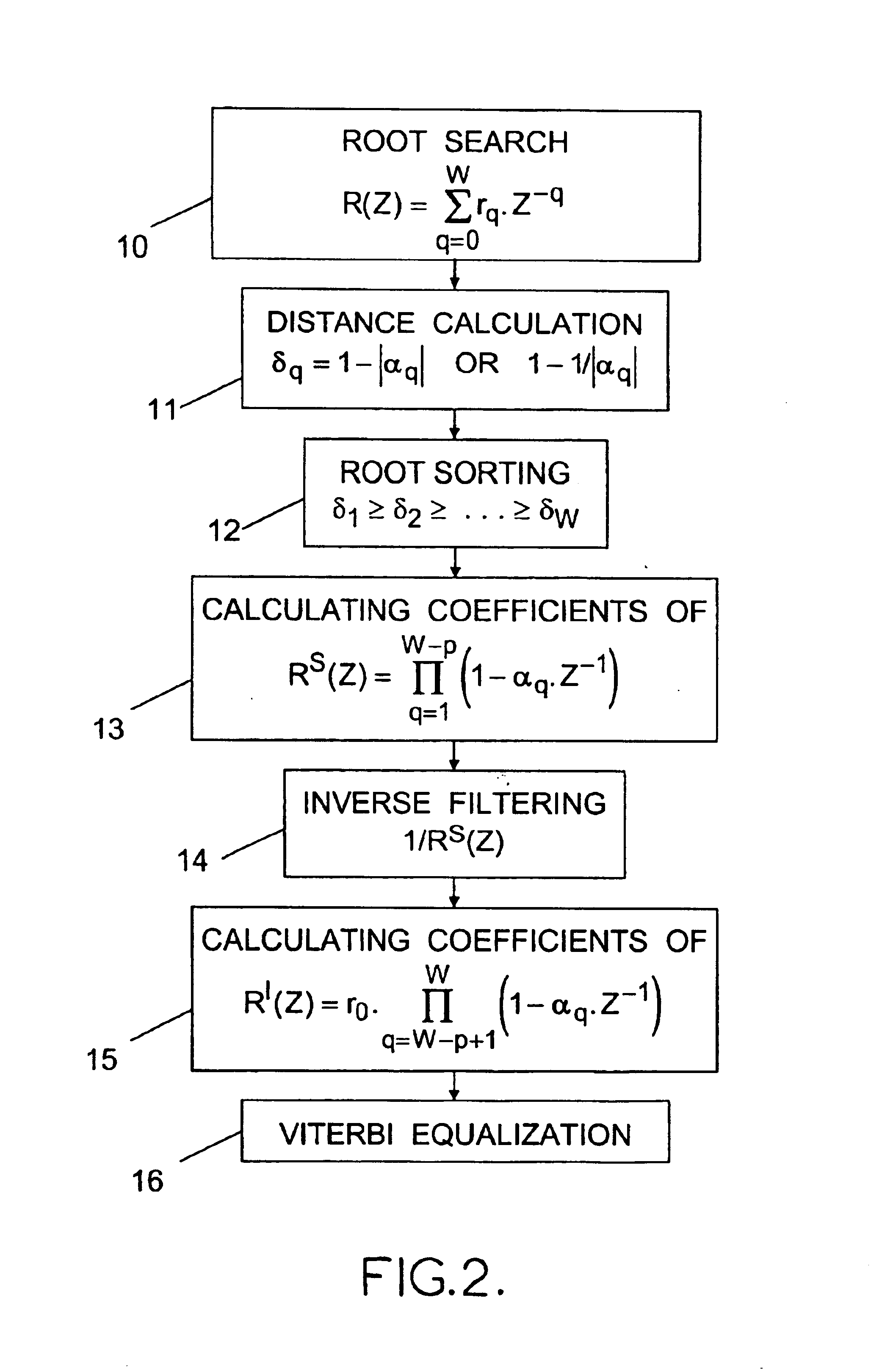Digital equalizing method and radio communication receiver implementing said method
a radio communication receiver and equalization method technology, applied in the field of digital equalization of signals, can solve the problems of complex implementation of the second equalization method, and achieve the effect of lower values and higher values of p
- Summary
- Abstract
- Description
- Claims
- Application Information
AI Technical Summary
Benefits of technology
Problems solved by technology
Method used
Image
Examples
Embodiment Construction
The receiver represented in FIG. 1 comprises a radio stage 1 which receives the signal picked up by antenna 2 and converts it to the baseband. The baseband signal is digitized by the analog-to-digital converter (ADC) 3 and fed to the reception filter 4. Filter 4 provides matched filtering with respect to the signal shaping by the transmitter. It delivers a digital signal at a rate of one complex sample per transmitted symbol.
The digital signal is fed to a demodulator comprising, on the one hand, a synchronization and channel estimation module 6 and, on the other hand, an equalizer 7.
The synchronization and channel estimation are, for example, performed conventionally by means of a synchronization sequence included by the transmitter in each signal frame. Detection of this sequence, known to the receiver, allows, on the one hand, the receiver to be synchronized relative to the temporal structure of the transmitted frames, and on the other to estimate the impulse response r=(r0, r1, ....
PUM
 Login to View More
Login to View More Abstract
Description
Claims
Application Information
 Login to View More
Login to View More - R&D
- Intellectual Property
- Life Sciences
- Materials
- Tech Scout
- Unparalleled Data Quality
- Higher Quality Content
- 60% Fewer Hallucinations
Browse by: Latest US Patents, China's latest patents, Technical Efficacy Thesaurus, Application Domain, Technology Topic, Popular Technical Reports.
© 2025 PatSnap. All rights reserved.Legal|Privacy policy|Modern Slavery Act Transparency Statement|Sitemap|About US| Contact US: help@patsnap.com



